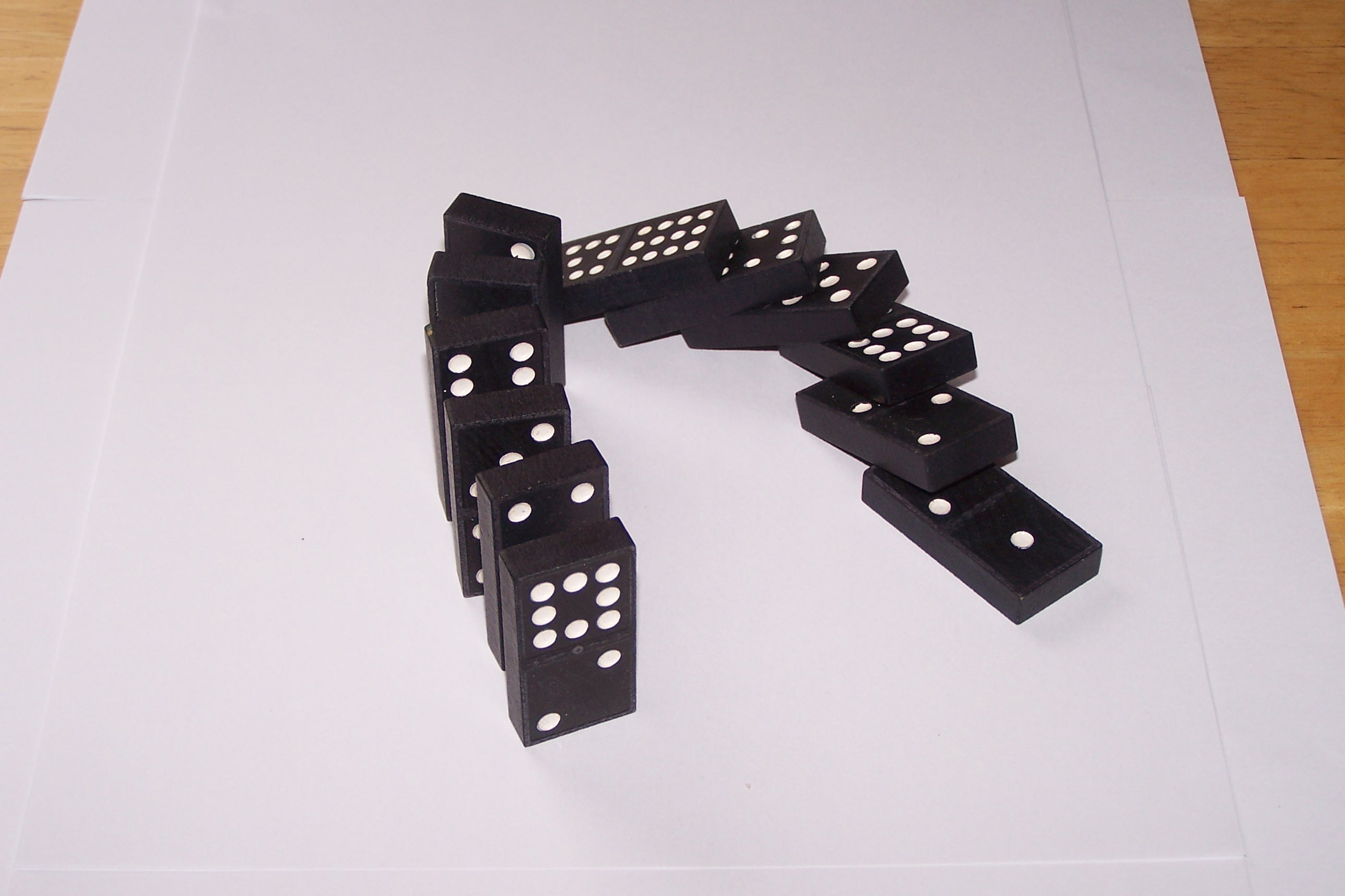by Paul R. Pillar
Physical, spatial imagery has long been applied to discourse about U.S. foreign policy. During the earlier portion of the Cold War, for example, the image of oozing red paint as representing the advance of communism—somewhat like the “cover the earth” logo of the Sherwin-Williams paint company—was often used. An even more prevalent and influential physical metaphor during the Cold War was falling dominoes. The metaphor became treated as an analytic construct—the “domino theory”—and shaped the thinking of many people in the United States, including foreign policy elites across different administrations and different political parties. The metaphors of oozing paint and falling dominoes inculcated a badly flawed perception of international communism and of local conflicts in which communists played a role. The image of dominoes was one of the most important influences on the thinking that led to the tragic U.S. intervention in Vietnam. It was an influence more powerful than analyses that correctly saw communism and conflicts in Asia as not really working like dominoes.
Such imagery is influential because it involves a comfortable and familiar way of thinking. The physical metaphors conform to the operation of human brains, most of the evolution of which occurred when humans, to survive, had to stay focused on immediate physical hazards and processes such as trees falling, storms moving in, or predators patrolling territory. There is a direct correspondence between such prehistoric phenomena and physical mechanisms that involve modern props such as paint or dominoes. But the correspondence fades when applied to the more complicated interactions of modern civilization, including international relations. The habit of relying on the simplifying physical images is an example of how evolved human traits that worked well for cave men don’t work so well for civilized mankind.
The most recent popular physical metaphor applied to foreign relations—so popular that its usage has become almost a fad—concerns a “vacuum” in the Middle East. A search on Google News (which covers only articles that have been “crawled” in the last 30 days) for items with both vacuum and Middle East yields 68,900 hits. The imagery has become a major part of criticism of President Obama from those who believe the United States ought to be intervening militarily in the Middle East more often and more deeply than it has been lately. The escalation of Russian military involvement in Syria has stimulated a chorus of commentary about how Russia is moving into a “vacuum” created by insufficient U.S. intervention in the region (and how this is bad).
The application of the “vacuum” imagery to Middle Eastern affairs is seriously misleading on several counts, beginning with the central fact that metaphor is not reality. Even the more physical aspects of foreign policy do not exhibit characteristics similar to true vacuums and how matter responds to them. Moreover, the Middle East is not a vacuum not only in the sense that it has an atmosphere with not much less than sea level pressure but also that it is filled with people, governments, armies, militias and much else that collectively make it what it is. The vacuum imagery implicitly assumes that there are important attributes of the region that don’t really count unless they involve intervention by an external power, and especially by the United States. It is insufficient attention to the heat and pressure involving what already is in a particular country, and too much emphasis on what external intervention ought to be able to accomplish, that often has spelled trouble, for the external intervenor as well as for people inside the country.
The metaphor further assumes a sort of zero-sum quality to events in the region, comparable to how two bodies of gas cannot move into the same space without increasing heat and pressure, and to how if one body moves out that can create a vacuum that sucks the other body of gas in. International relations do not work that way. U.S. and Russian international activity are not really like two blobs of gas. The imagery takes no account, for example, of how external forces can work together and not just work to push each other out of the same space—and in Syria, external forces working together offer the only hope for de-escalating the civil war there.
The imagery, because it is physical imagery, tends to equate foreign policy and the pursuit and protection of a nation’s interests with the most physically obvious manifestations of such pursuit, especially the application of military force. The metaphor suggests that the United States is not protecting its interests in a particular space if it is not injecting its military forces into that space. But the military is only one of several instruments for implementing a foreign policy, and not necessarily the best one in any specific situation. Some instruments that have no physical analogue at all, such as behind-closed-doors diplomacy, may be more useful and effective.
Finally, the way the vacuum metaphor is being used carries the implication that filling a space, whether through military force or other means, is to be equated with advancing U.S. interests. But the U.S. interests at stake with regard to any particular space may not be advanced at all by filling it. Trying to fill a space may entail far more costs than benefits, which unfortunately has been true of some very costly space-filling efforts in recent U.S. history.
Spatial and physical metaphors can be useful presentational devices, as an abbreviated and stylistic way to refer to an analytical point, as long as real analysis is there as well. The problem with metaphors starts when they begin to be used not as shorthand references to analysis but instead as a substitute for analysis, and for the careful inventory of costs, risks, and benefits that good foreign policy analysis requires. This problem has become increasingly apparent with much of the application of the vacuum metaphor to the Middle East, in a manner disturbingly reminiscent of how the domino metaphor was applied to Vietnam. The mode of thinking involved may be good for cave men, but not for us.
This article was first published by the National Interest and was reprinted here with permission. Copyright The National Interest.






Very good argument against the careless use of metaphors. Amb. Craig Dunkerley argued back in 2004 against the use of architectural metaphors with regard to security arrangements, pointing out that such figures of speech imply stasis.
Superlative commentary! Thanks, Paul Pillar.